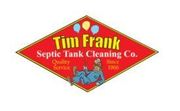
When you are new to septic systems, it can be helpful to understand the anatomy of this crucial plumbing component. With an understanding of where things are located and how they work, you can prevent issues and keep your system operating properly. Here is a little more information about how your septic system works, and what you can do to protect it.
The Parts of a Septic Systems
1. Septic Tank
The septic tank component of your septic system is the holding tank where wastewater, food scraps, and sludge head when you use a sink, run the garbage disposal, or flush a toilet. Inside the septic tank, solids sink to the bottom, wastewater sits in the middle, and oils float to the top. Every 3-5 years, your septic tanks need to be pumped to remove the solids and oils that don’t move to the drainfield.
2. Drainfield
A drainfield, also called a leach field, is where wastewater is filtered. Drainfields are designed as a series of pipes with holes in them, where wastewater moves throughout the system and drips out. Leach fields are buried under the ground so that you won’t see them. However, you should never build structures or park over the leach field, since it could compress the soil and cause drainage issues.
3. Soil
Believe it or not, the soil in your yard is an essential element for your septic system. Healthy soil provides the filtration necessary to ensure that wastewater is cleansed properly before arriving in the underground aquifer. Since some homes with septic systems also rely on underground wells, there are guidelines for how close your septic tank and leach field can be to your well.
Septic systems are designed to keep your home safe and functional, so let the professionals at Tim Frank Septic Tank Cleaning Co, in Middlefield, OH, handle the job. From septic system pumping and tank repair to system inspections and hydrojetting, these professionals can help you to identify and resolve your septic system problems long before they cause problems in your home. To find out more about how they can help, visit their website, or give their office a call at (440) 636-5111.
About the Business
Have a question? Ask the experts!
Send your question

